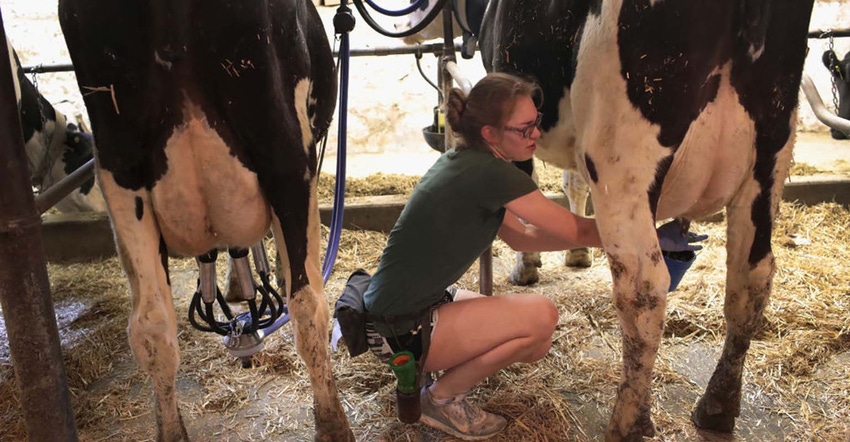June 14, 2019

Signup begins June 17 for the new Dairy Margin Coverage program, the dairy safety net that helps dairy producers manage the volatility of milk and feed prices.
The 2018 Farm Bill allowed USDA to construct the new DMC, which replaces the Margin Protection Program for Dairy. This new program offers protection to dairy producers when the difference between the all-milk price and the average feed cost (the margin) falls below a certain dollar amount selected by the producer.
“With an environment of low milk prices, high economic stress, and a new safety net program with higher coverage levels and lower premiums, it is the right time for dairy producers to seriously consider enrolling when signup opens,” said Agriculture Secretary Sonny Perdue. “For many smaller dairies, the choice is probably a no-brainer as the retroactive coverage through January has already assured them that the 2019 payments will exceed the required premiums.”
The program provides coverage retroactive to Jan. 1, 2019, with applicable payments following soon after enrollment. At the time of signup, dairy producers can choose between the $4.00 to $9.50 coverage levels.
The Farm Bill also allows producers who participated in MPP-Dairy from 2014-2017 to receive a repayment or credit for part of the premiums paid into the program. FSA has been providing premium reimbursements to producers since last month and those that elect the 75% credit option will now have that credit applied toward 2019 DMC premiums.
USDA has built in a 50% blend of premium and supreme alfalfa hay prices with the alfalfa hay price used under the prior dairy program to provide a total feed cost that more closely aligns with hay rations used by many producers. At a milk margin minus feed cost of $9.50 or less, payments are possible. With the 50% hay blend, FSA’s revised April 2019 income over feed cost margin is $8.82 per hundredweight (cwt). The revised margins for January, February and March are, respectively, $7.71, $7.91 and $8.66 – triggering DMC payments for each month.
DMC payments will be reduced by 6.2% in 2019 because of a sequester order required by Congress and issued in accordance with the Balanced Budget and Emergency Deficit Control Act of 1985.
DMC offers catastrophic coverage at no cost to the producer, other than an annual $100 administrative fee. Producers can opt for greater coverage levels for a premium in addition to the administrative fee. Operations owned by limited resource, beginning, socially disadvantaged or veteran farmers and ranchers may be eligible for a waiver on administrative fees. Producers have the choice to lock in coverage levels until 2023 and receive a 25% discount on their DMC premiums.
To assist producers in making coverage elections, USDA partnered with the University of Wisconsin to develop a DMC decision support tool, which can be used to evaluate various scenarios using different coverage levels through DMC.
More Information
All dairy operations in the United States are eligible for the DMC program. An operation can be run either by a single producer or multiple producers who commercially produce and market cows’ milk.
Eligible dairy operations must have a production history determined by FSA. For most operations, production history is based on the highest milk production in 2011, 2012 and 2013. Newer dairy operations have other options for determining production history. Producers may contact their local FSA office to get their verified production history.
Dairy producers also are reminded that 2018 Farm Bill provisions allow for dairy operation to participate in both FSA’s DMC program and the Risk Management Agency’s Livestock Gross Margin (LGM-Dairy) program. There are also no restrictions from participating in DMC in conjunction with any other RMA insurance products.
For more information, visit farmers.gov DMC webpage or contact your local USDA service center. To locate your local FSA office, visit farmers.gov/service-locator.
Source: USDA, which is solely responsible for the information provided and is wholly owned by the source. Informa Business Media and all its subsidiaries are not responsible for any of the content contained in this information asset.
You May Also Like




